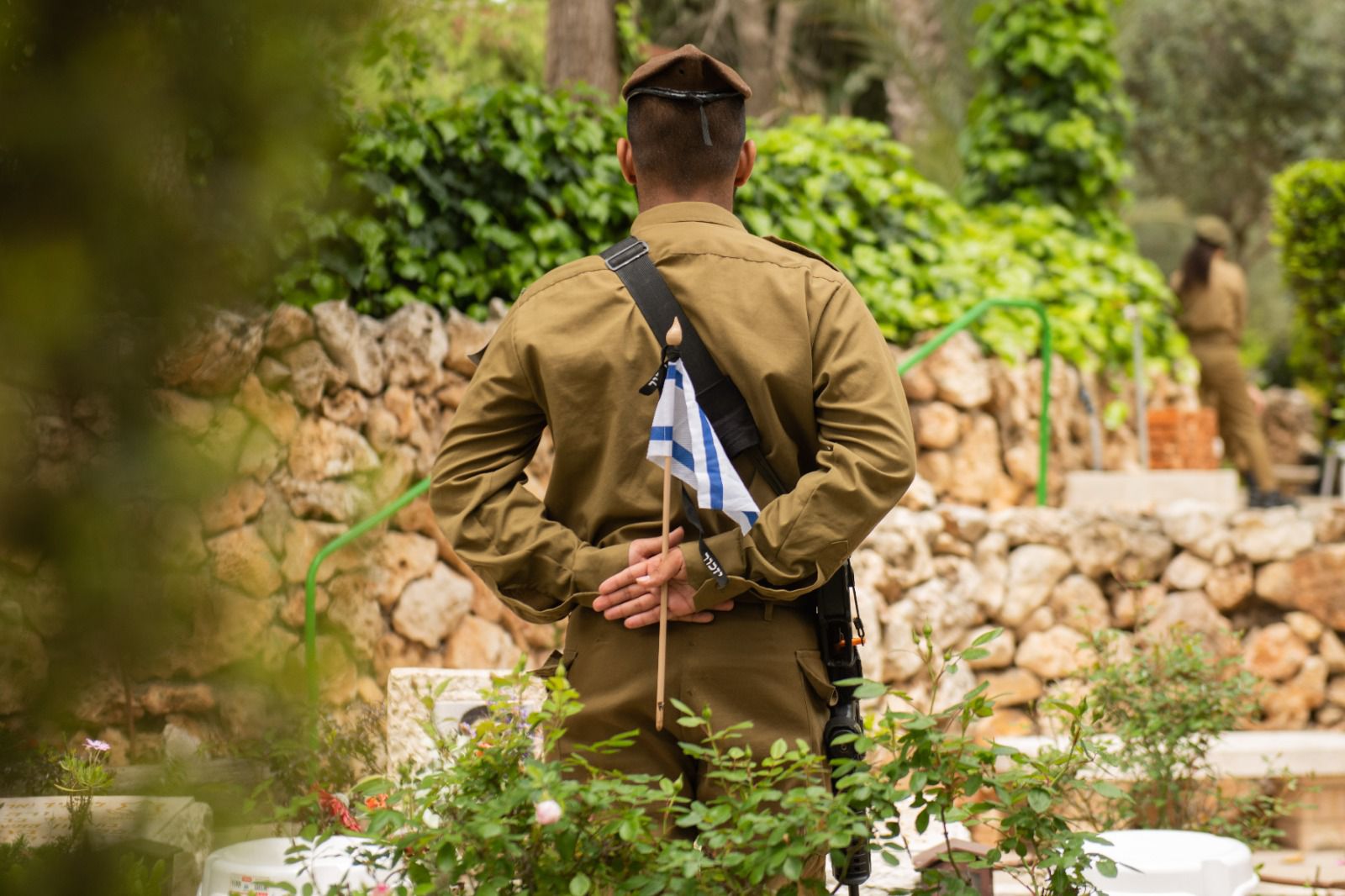





Elizabeth—The reception area behind the top of the stairs at Bruriah High School blends ominously into the somber depths of those familiar and sinister railroad tracks, evocative of the horrific journey that so many millions took during those dark days of the Holocaust. The shift in environment is tangible as 11th-grade curator Avigail Goldberger coaxes the visitors into the first exhibit of the Bruriah High School 2015 Holocaust Museum. Docents Meira Leiter (Passaic), Kayla Garb (Teaneck), Devora Berman (Monsey), Esther Seif (Monsey), and Tzedaka Initiative Coordinator Shira Alter (Teaneck) guide the visitors through four historical periods describing how the groundwork for the Holocaust was planned, executed, and ultimately aborted with the surrender of the German army—culminating in the creation of the state of Israel. The Tzedaka Initiative represents the students’ proactive vision, driving their objective to exceed the rudimentary understanding of the historical events of the Holocaust by taking the initiative to address the resultant, continuing, and urgent needs of those less fortunate, and taking social action to alleviate some of those needs.
Visitors were humbled and astonished by the stark realities so accurately represented in this museum. Angela Garretson, mayor of Hillside, was visibly moved by the historical journey portrayed. The mayor expressed her admiration and emphasized the importance of preserving the history, as well as promoting attitudes of humanitarian responsibility and growth as essential outcomes of events such as the Holocaust. Edward Mossberg—himself a Holocaust survivor—described to the group his personal experience of presenting a Sefer Torah to an officer and battalion of the Israeli Army at one of the infamous camps, and paled as he paused momentarily at the museum’s representation of the railroad track in the exhibit. Erika Sauerhoff, hidden for years as a young child in France, came prepared with her collection of pennies (and pledged an amount equivalent to the number of French children who survived) for the Tzedakah Initiative’s goal of raising 1.5 million pennies to commemorate the 1.5 million Jewish children who perished in the Holocaust. Viewing the post-war exhibits, Holocaust survivor Clara Kramer described taking but a single item when the Jewish Brigade came to liberate her. “Clara’s Diary” was later published as a testimonial to the events. Other visitors included Rabbi Elazar Teitz, Dean of the Jewish Educational Center; Barbara Wind, Director, Holocaust Council of Greater Metrowest; Stanley Stone, Executive Director, Jewish Federation of Greater Metrowest; Dov Ben Shimon, CEO, Jewish Federation of Greater Metrowest; Elizabeth Mayor Chris Bollwage; Dr. Paul Radensky, Manager of Education Programs, the Jewish Heritage Museum; and Marcie Lazar, local chair of the Jewish Federation’s annual Yom Hashoah commemoration, among others.
After viewing the museum,Wind commented, “Thank you so much for inviting me to see the marvelous exhibition the Bruriah students put together. The lovely girls who were our docents were so impressive with their knowledge, their passion and their self-confidence. Kol HaKovaod and may they and everyone in the JEC community go from strength to strength.”
The exhibits include authentic collections of photographs, documents, models, and replicas of Holocaust-era artifacts, as well as a facsimile of events like the Eichmann trial and execution. The students did an amazing job of designing a floor-plan with a looming sense of isolation, creating a truly sobering environment within, yet tangibly separate, from the hallways of the school. Under the seasoned and capable tutelage of Mr. Joel Glazer, Bruriah History teacher, these young women have created a vital and meaningful space which transports the visitor from the present into the grim realities of Holocaust history—just by stepping into their “museum m’at.”
The students request that people bring their pennies to the museum before the exhibit closes this week; a visit everyone should make and will long remember. For those unable to visit the exhibit in person, pennies (and/or dollars) can be brought or sent to the school to help the students fulfill their efforts in making a “1.5 million-penny difference” to others in great need.
By Ellie Wolf










